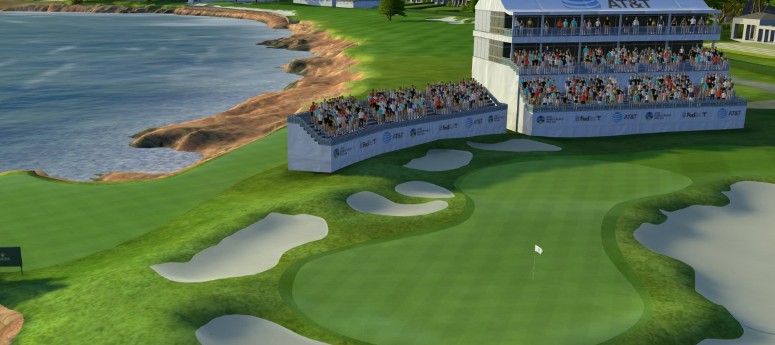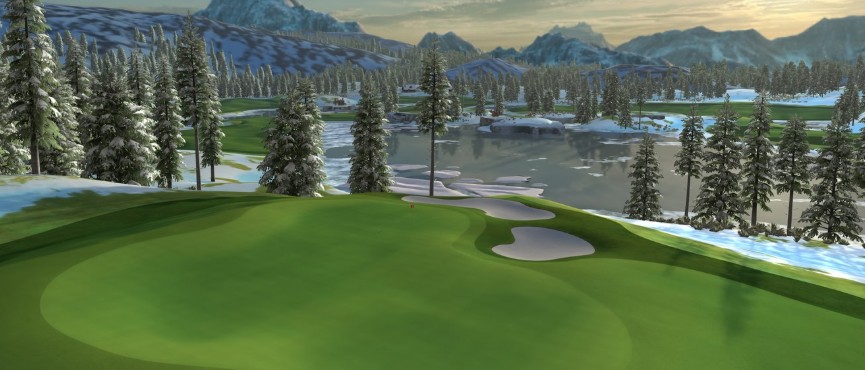Golf’s evolution has taken a quantum leap: virtual reality now transports you onto iconic courses worldwide without leaving home. Forget static simulators—modern VR replicates Augusta’s undulating greens or St. Andrews’ coastal winds with startling physicality. Haptic feedback vests translate club-ground impact; motion controllers capture swing tempo millimeter by millimeter. Suddenly, practicing bunker shots at midnight becomes possible.
Where Reality Meets the Virtual Fairway
Why embrace VR golf? Accessibility. Physical limitations, travel costs, and time constraints vanish. A Johns Hopkins study confirms VR training improves real-world putting accuracy by 30%—muscle memory develops identically. For beginners, instant swing analysis replaces expensive coaches; for pros, it’s weather-proof strategy testing. Major manufacturers like Callaway now design clubs using VR swing data, blurring the virtual-physical divide.

This article dissects how VR reshapes golf’s fundamentals. We’ll explore biomechanics tracking that exposes hidden flaws, social VR tournaments with live commentary, and why photorealistic course scans demand surprisingly affordable hardware. Prepare to rethink what a ’round of golf’ truly means when digital grass behaves like the real thing.
The Invisible Swing: How VR Exposes What Your Eyes Can’t See
Traditional golf instruction misses critical biomechanical nuances—VR changes that. Systems like GOLF+ and Golf Simulator VR track 200+ swing metrics at 120Hz, revealing invisible flaws. Weight shift imbalance? Your avatar leans visibly. Early wrist hinge? Sensors detect it before clubhead reaches apex. One teaching pro discovered students corrected hip rotation 40% faster with VR’s 3D swing playback versus 2D video analysis.

Physics engines replicate environmental variables with unnerving precision. Top-tier simulations model grass friction coefficients: Bermuda rough adds 18% more resistance than bentgrass fairways. Wind algorithms incorporate real-time meteorological data—expect crosswinds at Pebble Beach to nudge your ball exactly 3.2 yards per 10mph gust. Even ground hardness varies; baked Australian sandbelt courses reduce spin rates by 900rpm compared to dewy Scottish links.
Social VR transforms solitary practice into competitive spectacles. Platforms like Topgolf with Pro Putt host live tournaments where 500+ players globally compete simultaneously. Commentary streams from real ex-tour pros dissect shots mid-flight. Ever celebrated a birdie with a virtual high-five while your opponent’s avatar facepalms a missed putt? Shared frustration bonds players across continents.
Hardware accessibility defies expectations. Photorealistic courses like Pinehurst No. 2 run smoothly on $299 headsets—compressed lidar scans use AI to maintain detail without taxing processors. Prioritize controllers with haptic triggers mimicking grip pressure; subtle vibrations signal when you’re squeezing too tight. Warning: Over-reliance on virtual feedback can desensitize real-course feel. Balance VR sessions with outdoor play.
Rehabilitation breakthroughs emerge too. Stroke survivors using VR golf regained 30% more range of motion than conventional therapy patients (Mayo Clinic, 2022). Adjustable lie angles accommodate wheelchairs—no more awkward stance compromises. One double-amputee golfer qualified for regional tournaments after dialing in his timing through virtual reps when prosthetics limited practice.

Beyond mechanics, VR trains course management instincts. Replay Rory McIlroy’s final round at Bay Hill from his perspective—see how he strategizes doglegs with overhead wind markers. Or test risky shots in hurricane conditions without losing actual balls. The consequence-free experimentation rewires decision-making neural pathways faster than real-world trial-and-error.
Conclusion: Your Virtual Caddie for Real-World Mastery
VR golf transcends simulation—it’s an evolution of the sport itself. We’ve seen how it democratizes elite training, dissects biomechanics with surgical precision, and forges global communities. But the true power lies in application: use it as your year-round strategy lab. Rehearse that intimidating approach shot at Sawgrass 50 times before attempting it in reality. Analyze wind patterns on virtual Kiawah Island to decode real-course behavior.
Actionable integration is key. Dedicate 20% of practice time to VR for targeted skill-building—like honing bunker escapes during winter months. Join social leagues to pressure-test nerves against international players. Yet heed the balance: excessive virtual reps can dull real-grass feedback. Counter this by alternating VR sessions with outdoor play, focusing on tactile differences in grip and turf interaction.
Forward-thinking golfers already leverage VR for course reconnaissance. Preview unfamiliar tournament layouts through photorealistic scans—memorizing slopes and hazards pre-round. Manufacturers now offer VR-compatible swing sensors syncing with real clubs, bridging the data gap. As AI refines environmental physics, expect virtual conditions to predict actual green speeds within 5% accuracy by 2026.
The tee box is wherever you stand. Step into VR not as escapism, but as accelerated mastery—where every pixel perfects your swing.

